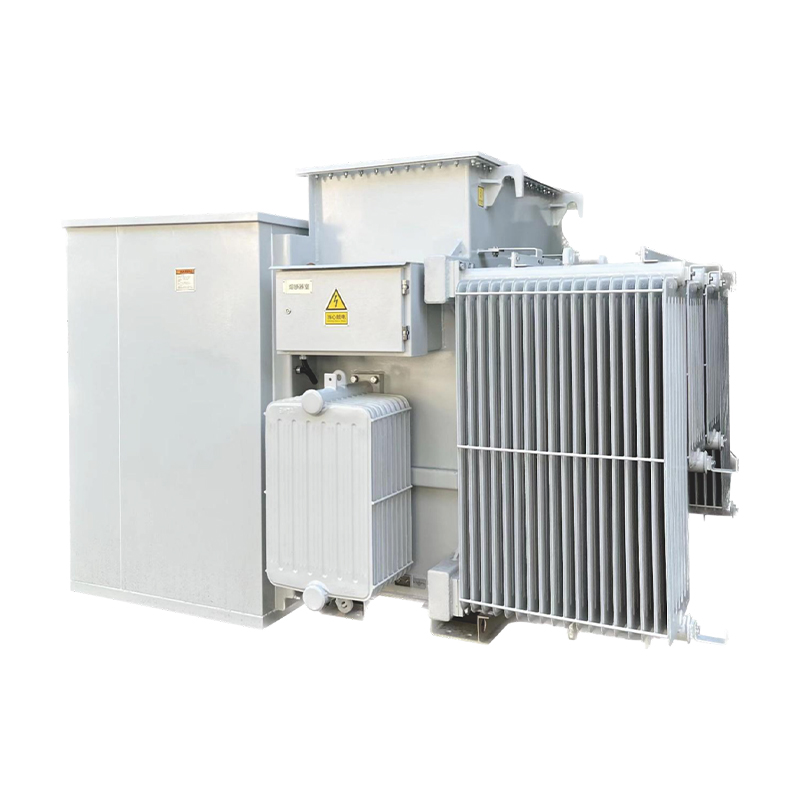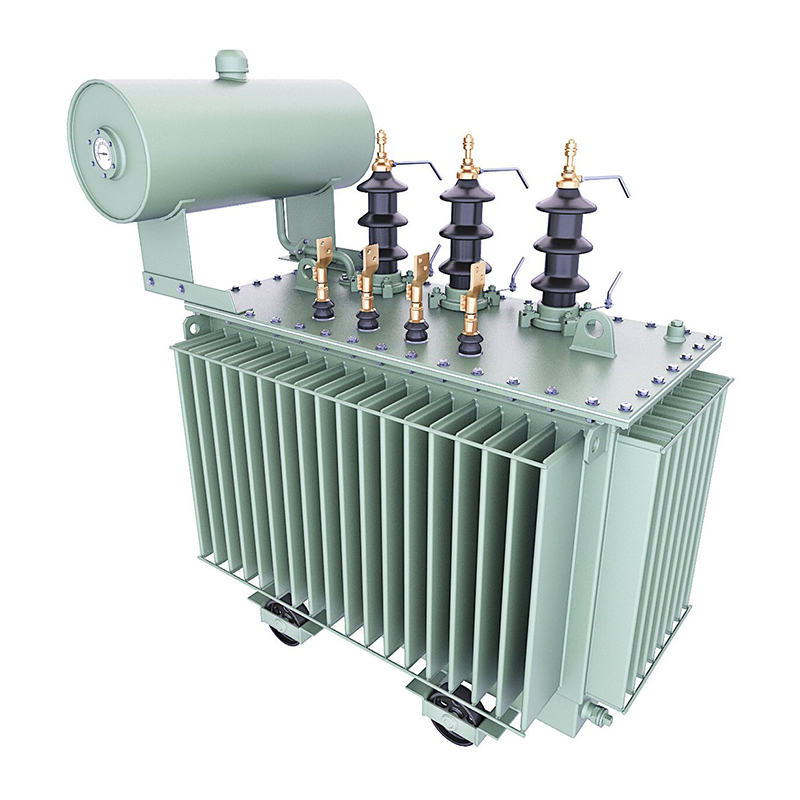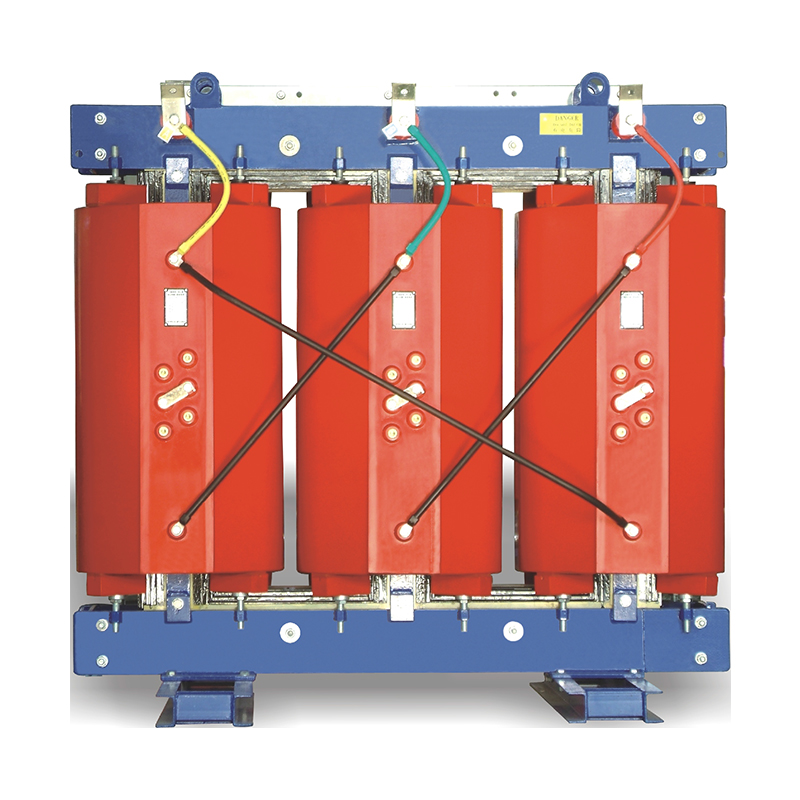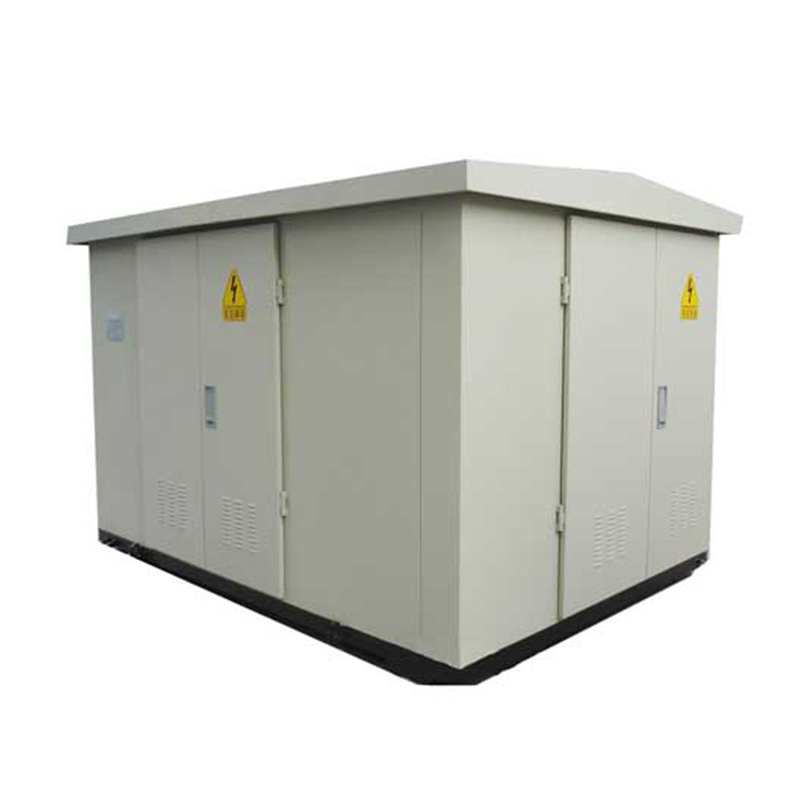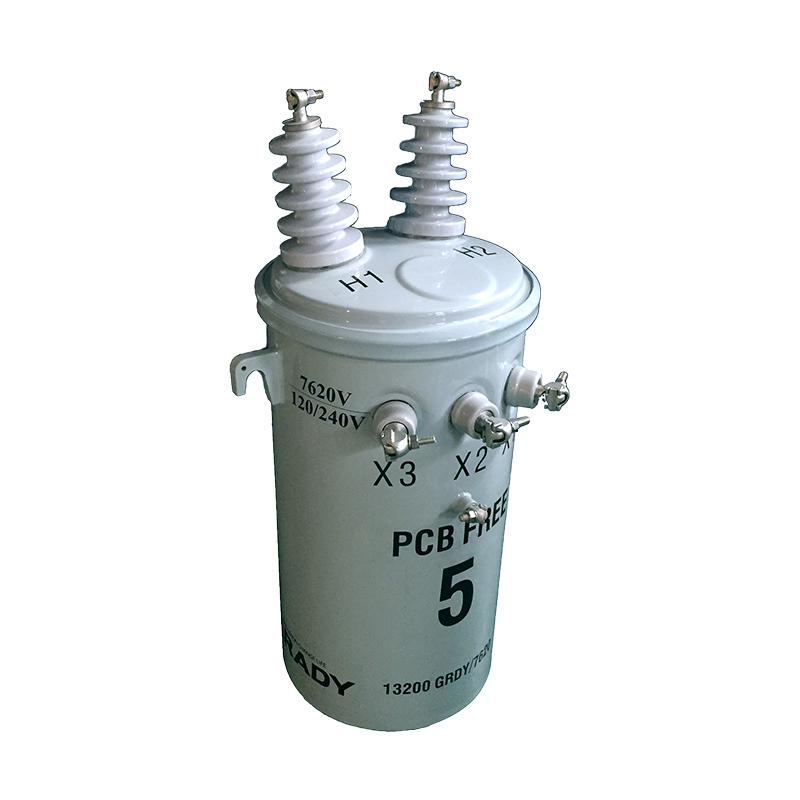Environmental Regulations and Technical Measures for Power Transformer Noise Control
ISO Standards: The International Organization for Standardization (ISO) has developed several standards related to environmental noise control. For power transformers, standards such as ISO 1996 "Acoustics - Description, measurement and assessment of environmental noise" provide a general framework for measuring and evaluating noise levels. These standards require power transformers to meet certain noise emission limits in different environmental settings, considering factors like the distance from residential areas and the type of land use.
IEC Standards: The International Electrotechnical Commission (IEC) also plays a significant role. IEC 60076 series standards, which are related to power transformers, include provisions regarding noise levels. For example, they specify methods for measuring transformer noise and set limits for different voltage levels and power ratings to ensure that the noise generated by transformers during normal operation does not exceed acceptable levels in the surrounding environment.
In the United States: The Environmental Protection Agency (EPA) enforces regulations to control noise pollution. In the context of power transformers, the EPA has set noise limits based on the type of area (residential, commercial, industrial, etc.). For instance, in residential areas, the noise level from power transformers during the day should generally not exceed 55 dB(A), and at night, it should be even lower to avoid disturbing residents' rest. State - level regulations may also vary, with some states implementing more stringent requirements.
In the European Union: The EU has issued directives related to environmental noise control, such as the Environmental Noise Directive (END). Member states are required to implement measures to reduce noise pollution, including that from power transformers. Each member state may further develop its own national regulations based on the END. For example, in some European countries, new power transformer installations near schools or hospitals are subject to extremely strict noise limits, often below 40 dB(A) during sensitive periods.
In China: The "Law of the People's Republic of China on the Prevention and Control of Environmental Noise Pollution" clearly states that for equipment that may generate noise pollution, including power transformers, relevant units should take measures to prevent and reduce noise pollution. The "Industrial Enterprise Factory Boundary Environmental Noise Emission Standard" (GB 12348 - 2008) sets different noise emission limits for industrial areas, commercial areas, and residential areas. For power transformers located in residential areas, the noise level at the factory boundary during the day should not exceed 55 dB(A), and at night, it should not exceed 45 dB(A).
Magnetostriction in the Core: The primary source of noise in a power transformer is magnetostriction in the iron core. When an alternating magnetic field is applied to the core, the magnetic domains in the iron material expand and contract, resulting in mechanical vibrations. This vibration occurs at twice the frequency of the power supply (e.g., 100 Hz for a 50 Hz power system). The magnetostrictive effect causes the core to vibrate, and these vibrations are then transmitted to the transformer tank and radiated as noise.
Electromagnetic Forces in the Windings: The current flowing through the windings of the transformer generates electromagnetic forces. These forces cause the windings to experience mechanical stress and vibrate. The vibration of the windings contributes to the overall noise output of the transformer. The magnitude of the electromagnetic forces and the resulting noise depends on factors such as the current magnitude, the number of turns in the windings, and the geometric arrangement of the windings.
Cooling System Noise: Power transformers often require cooling systems to dissipate heat generated during operation. Cooling fans and oil pumps in these systems are additional sources of noise. The rotation of fan blades and the operation of oil pumps produce mechanical noise. Moreover, the vibration of the transformer tank can be transmitted to the cooling system, further amplifying the noise generated by the cooling components.
Low - Frequency Dominance: Power transformer noise is typically dominated by low - frequency components. The fundamental frequency of the noise is often around 100 Hz (for 50 Hz power systems) due to magnetostriction in the core, and its harmonics at 200 Hz, 300 Hz, etc., also contribute significantly. Low - frequency noise has the characteristics of strong diffraction and penetration ability, which means it can travel long distances and penetrate through walls and other barriers more easily compared to high - frequency noise.
Steady - State Noise: During normal operation, power transformers produce relatively stable and continuous noise. The noise level remains relatively constant under steady - load conditions, but it may change slightly with variations in load current. However, sudden changes in load, such as during transformer energization or when there are short - circuit faults, can cause transient increases in noise levels.
Using High - Quality Core Materials: Selecting core materials with low magnetostriction characteristics is an effective way to reduce noise at the source. For example, using high - grade grain - oriented silicon steel sheets can significantly reduce the magnetostrictive effect. These special steel sheets have a more uniform grain structure, which results in less mechanical vibration when subjected to an alternating magnetic field.
Optimizing Winding Design: Rational winding design can reduce electromagnetic forces and thus lower winding - related noise. This can be achieved by optimizing the winding layout, such as using concentric windings with proper insulation distances to minimize the interaction of electromagnetic fields between different windings. Additionally, increasing the cross - sectional area of the winding conductors can reduce the current density, thereby decreasing the electromagnetic forces.
Designing an Efficient Cooling System: The design of the cooling system can be optimized to reduce noise. For cooling fans, using fans with aerodynamically designed blades can reduce the turbulence and noise generated during rotation. Variable - speed fans can be employed, which adjust their speed according to the transformer's temperature, reducing unnecessary high - speed operation and thus noise. For oil pumps, choosing pumps with low - noise operation characteristics and proper installation to isolate vibrations can also effectively reduce cooling - system - related noise.
Proper Installation Location: Selecting an appropriate installation location for the power transformer is crucial. Transformers should be installed as far away as possible from noise - sensitive areas such as residential buildings, schools, and hospitals. When space allows, a sufficient distance can be maintained to take advantage of the natural attenuation of noise with distance. In addition, the terrain and surrounding structures can be utilized. For example, placing the transformer in a depression or behind a natural barrier like a hill can help block the propagation of noise.
Vibration Isolation: Installing vibration - isolation devices between the transformer and its foundation can effectively reduce the transmission of vibrations from the transformer to the ground. Spring - type or rubber - type vibration isolators are commonly used. These isolators have high elasticity and damping properties, which can absorb and isolate the vibrations generated by the transformer, preventing them from being transmitted to the building structure or the ground and further reducing structure - borne noise.
Load Management: Maintaining a stable load on the power transformer can help control noise levels. Sudden large - scale load changes can cause transient increases in noise. By optimizing the power distribution network and using load - balancing techniques, the load on the transformer can be made more stable. For example, intelligent grid control systems can be used to monitor and adjust the load in real - time, ensuring that the transformer operates within a relatively stable load range and minimizing the occurrence of large - load fluctuations.
Regular Maintenance and Inspection: Regular maintenance of the power transformer is essential for noise control. Inspecting and tightening loose components, ensuring the normal operation of the cooling system, and checking for any signs of core or winding damage can help keep the transformer in good working condition and prevent abnormal noise generation. For example, if the bolts on the transformer tank are loose, they can cause additional vibrations and noise. Regularly tightening these bolts can eliminate such potential noise sources.
Using Sound - Absorbing Materials: Installing sound - absorbing materials around the power transformer can effectively reduce the noise level in the surrounding environment. Materials such as glass wool, rock wool, and acoustic foams have good sound - absorbing properties. These materials can be installed on the inner walls of the transformer room or in the form of acoustic barriers around the outdoor transformer. The sound - absorbing materials work by converting the sound energy into heat energy through internal friction, thus reducing the reflected and transmitted sound.
Constructing Sound - Insulating Enclosures: Building sound - insulating enclosures around the transformer can significantly block the propagation of noise. The enclosure can be made of materials with high sound - insulation performance, such as double - layer steel plates filled with sound - insulating materials. The design of the enclosure should also consider ventilation and heat dissipation requirements to ensure the normal operation of the transformer. For example, ventilation openings in the enclosure can be equipped with sound - insulating louvers to allow air circulation while reducing noise leakage.
Problem Description: A substation located in an urban residential area in a European city was facing complaints from residents due to the noise generated by its power transformers. The noise level at the nearest residential building exceeded the local regulatory limit of 45 dB(A) at night, causing disturbance to residents' sleep.
Technical Measures Implemented:
The transformers were equipped with high - quality vibration - isolation pads made of a combination of rubber and spring materials. This reduced the transmission of vibrations from the transformers to the ground by approximately 80%.
The cooling fans were replaced with low - noise, variable - speed fans. These fans adjusted their speed according to the temperature of the transformer, reducing the fan - related noise by about 10 dB(A).
A sound - insulating enclosure was constructed around the transformers. The enclosure was made of double - layer steel plates with a thickness of 3 mm, filled with 100 mm of rock wool. The enclosure also had specially designed ventilation openings with sound - insulating louvers.
Outcome: After implementing these measures, the noise level measured at the nearest residential building decreased to 42 dB(A) at night, meeting the local regulatory requirements. The number of resident complaints dropped significantly, and the relationship between the power company and the local community improved.
Problem Description: A power transformer in a commercial complex in Shanghai was generating excessive noise, which affected the business operations in the surrounding area. The noise level at the boundary of the commercial complex exceeded the limit specified in the "Industrial Enterprise Factory Boundary Environmental Noise Emission Standard" (GB 12348 - 2008) for commercial areas.
Technical Measures Implemented:
The core of the transformer was upgraded with high - grade grain - oriented silicon steel sheets, which reduced the magnetostrictive noise by about 15%.
Sound - absorbing panels made of glass wool were installed on the walls of the transformer room. The panels had a thickness of 50 mm and a sound - absorption coefficient of 0.8 at 100 Hz.
The oil pump in the cooling system was replaced with a new model that had a lower noise level. Additionally, flexible hoses were installed between the pump and the pipeline to reduce vibration transmission.
Outcome: The noise level at the boundary of the commercial complex decreased to within the allowable limit specified in the standard. The improvement in the acoustic environment enhanced the business environment of the commercial complex, and there were no further complaints from the tenants.
Balancing Noise Control and Cost: Implementing comprehensive noise control measures often requires significant investment. The cost of high - quality noise - reducing materials, advanced cooling system designs, and complex installation work can be a burden for power companies, especially for small - and medium - sized enterprises. There is a need to find a balance between achieving effective noise control and controlling costs.
Meeting Stringent Environmental Requirements: As environmental regulations become more and more stringent, power transformers need to meet increasingly lower noise limits. This poses a great challenge to the existing noise control technologies and requires continuous innovation and improvement.
Combating Low - Frequency Noise: Low - frequency noise, which is the dominant component of power transformer noise, is difficult to control. Traditional noise - control methods are often less effective for low - frequency noise. Developing more effective technologies specifically for low - frequency noise reduction is an urgent task.
Advanced Materials and Technologies: The development and application of advanced materials and technologies will play a key role in future power transformer noise control. For example, the use of new types of composite materials with excellent sound - absorption and vibration - isolation properties, such as carbon - fiber - reinforced composites, may lead to more efficient noise control solutions. In addition, the application of smart materials that can adjust their properties according to environmental changes, such as piezoelectric materials, may provide new ideas for active noise control.
Integrated Design and Optimization: Future power transformer design will focus more on integrated design and optimization, considering noise control from the initial design stage. By comprehensively considering factors such as electromagnetic design, thermal design, and mechanical design, and optimizing them simultaneously, it is possible to achieve better noise control performance while ensuring the normal operation and reliability of the transformer.
Smart Monitoring and Adaptive Control: The use of smart sensors and control systems will enable real - time monitoring of power transformer noise and adaptive control. Smart sensors can continuously monitor the noise level and operating status of the transformer, and the control system can adjust the operating parameters of the transformer or the noise - control equipment in real - time according to the monitored data, ensuring that the noise level remains within the allowable range under different operating conditions.
Relatenews
- The Role of Power Transformers in Voltage Regulation within Power Systems 2025-08-25 08:14:00
- Environmental Regulations and Technical Measures for Power Transformer Noise Control 2025-08-25 08:12:00
- The Application of Big Data Analytics in Power Transformer Fault Prediction 2025-08-25 08:11:00
- Impact of Distributed Generation Integration on Load Characteristics of Power Transformers 2025-08-16 09:43:00
- Conditions and Protection Coordination Strategies for Parallel Operation of Power Transformers 2025-08-16 09:42:00
- Application of On-Line Oil Chromatography Monitoring Systems for Power Transformers 2025-08-16 09:38:00
- Capacity Calculation Methods for Power Transformers in Electric Vehicle Charging Stations 2025-08-09 16:02:00
- Key Technologies of Smart Power Transformers: Sensors, IoT, and Big Data 2025-08-09 15:59:00





